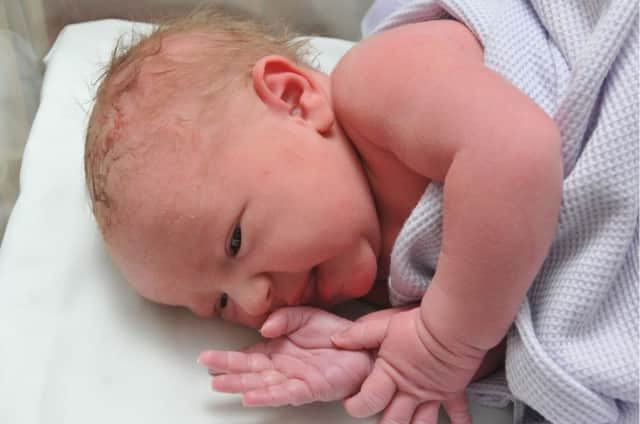Health quality for IVF babies steadily rising


The number of babies conceived with the aid of assisted reproduction technology (ART) who are stillborn, or die within the first year of life, has also fallen.
The findings come from an analysis of data on more than 92,000 children in Denmark, Finland, Norway and Sweden, the largest long-term investigation into the health of ART babies ever carried out.
Advertisement
Hide AdAdvertisement
Hide AdDr Anna-Karina Aaris Henningsen, from the University of Copenhagen in Denmark, who led the research published online in the journal Human Reproduction, said: “During the 20-year period of our study, we observed a remarkable decline in the risk of being born pre-term or very pre-term.
“The proportion of single ART babies born with a low or very low birth weight – less than 2,500 grams or 1,500 grams respectively – also decreased. The rates for stillbirths and death during the first year declined among both singletons and twins, and fewer ART twins were stillborn or died during the first year compared with spontaneously conceived twins.
“These data show that if there is a national policy to transfer only one embryo per cycle during assisted reproduction, this not only lowers the rates of multiple pregnancies, but also has an important effect on the health of the single baby.
“Transferring several embryos in one cycle, even if it results in only a single baby, can still have a negative impact on the overall neonatal outcomes of singletons. By transferring only a single embryo, you not only avoid multiple births and all the health problems for the babies and mothers associated with these, but it also results in healthier ART singletons because there are fewer instances of ‘vanishing twins’ or procedures to reduce the number of foetuses developing after successful implantation of several in the mother’s womb.”
Advertisement
Hide AdAdvertisement
Hide AdThe researchers looked at the outcomes of 62,379 singletons and 29,758 twins born with the help of ART between 1988 and 2007 in the four Nordic countries.
The results were compared with those from spontaneously conceived control groups of 362,215 singletons and 122,763 twins born in the same countries in the same period.
Dr Henningsen said improvements in technical and clinical IVF (In-Vitro Fertilisation) skills had contributed to the trend.
She added: “In addition, the culture media in which the embryos are first developed in the laboratory have improved in quality, as have the hormonal medications used to help women produce a sufficient number of high quality eggs at the right time.”